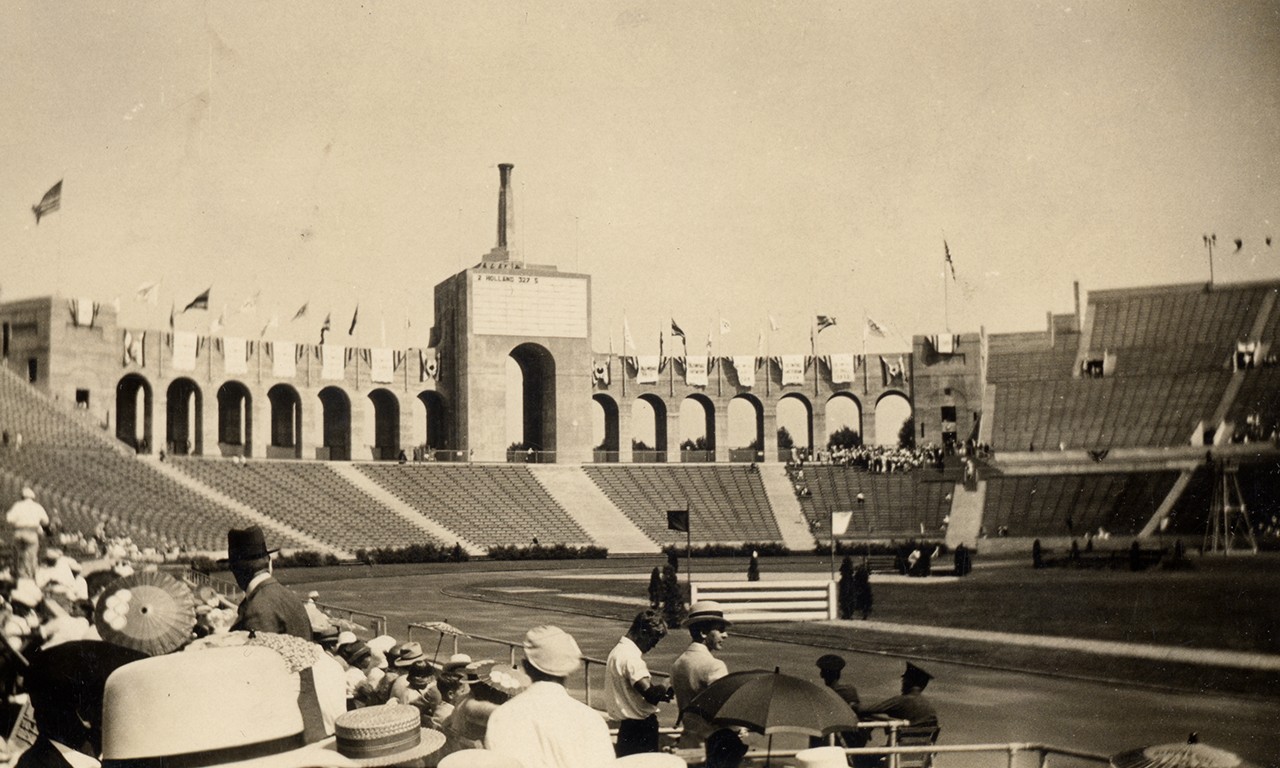 |
Field and Seating Area of the Olympic Stadium, 1932
Unknown Photographer; Los Angeles, California
Photographic print; 4 1/4 x 2 3/4 in.
32352A.1
Gift of Lonnie Edward Thompson |
Beijing Olympics 2: Electric Boogaloo
The 2022 Winter Olympics are set to open tomorrow, on February 4, 2022, featuring what promises to be yet another incredible display of athletic prowess. Fourteen years ago, the Bowers Blog celebrated another Beijing Olympics—the country’s first Summer Olympics in 2008—by looking back at one of the first Summer Olympics celebrated in the United States: the Xth Olympiad held in Los Angeles in 1932. With the games returning to Beijing, the Blog looks at the event 90 years later, shedding new light into some of the key developments and happenings of the first Los Angeles games.
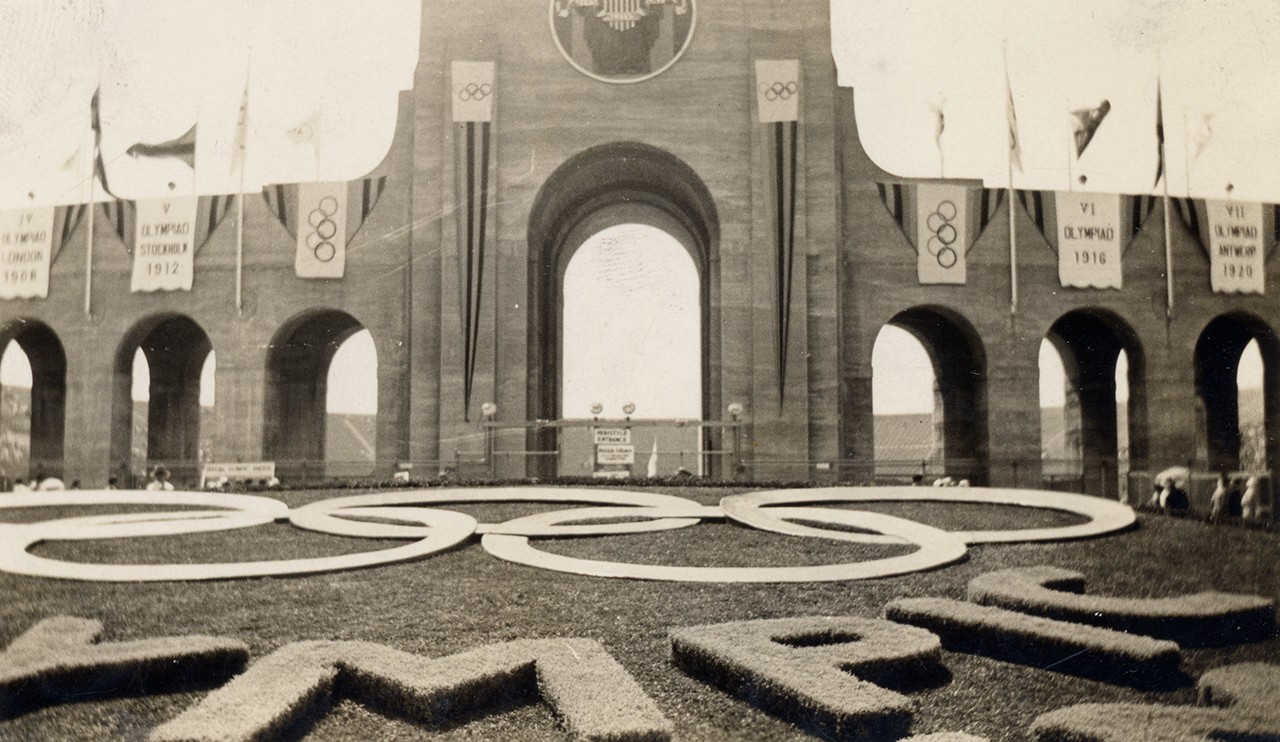 |
Gate of the Olympic Stadium, 1932
Unknown Photographer; Los Angeles, California
Photographic print; 4 1/4 x 2 3/4 in.
32352A.2
Gift of Lonnie Edward Thompson |
Philhellenism
The modern Olympic games are largely inspired by an ancient Greek tradition dating back hundreds of years before the common era. In the late 19th century, a French educator, historian, and baron named Pierre de Coubertin began working with others to advocate for an international sporting event which would promote personal fitness, healthy competition between amateur athletes, and even peace between nations. Romanticism’s gilded look back at the ancient cultures of Europe was very much in vogue, and no model for an international sporting competition seemed more apt than that of Greece. In keeping, the very first games were held in Athens in 1896. There was unfortunately no shortage of trouble that year, a feature of many of the early games which competed for attendance against the large expositions they had been planned to coincide with—as was the case for the first Olympiad in the United States, St. Louis in 1904—and suffered from growing tensions in Europe in the lead up to and during the Great War.

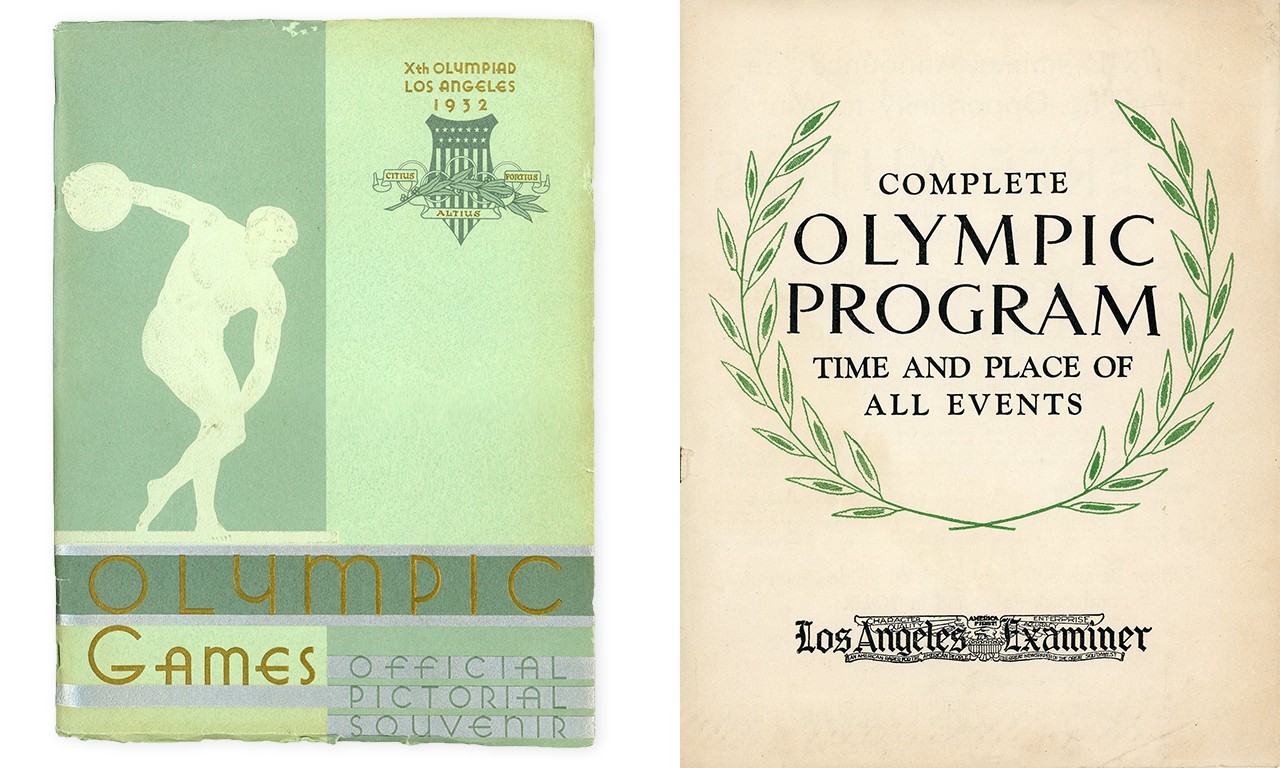 |
Olympic Games Official Pictorial Souvenir and Complete Olympic Program, 1932
The Organizing Committee; Los Angeles, California
Printed paper
32352C,D
Gift of Lonnie Edward Thompson |
Hard Times
The decade after WWI was a better time for the Olympics but it would not last until the 1932 Summer Olympics in Los Angeles. A delicate peace and the economic boom of the roaring ‘20s fell over Europe like a gentle rain after a long drought. Ironically, the early years of the ‘30s saw the Great Depression and a ruthless drought cover America’s Southern Plain region in dust. Los Angeles had made an unopposed bid to host the games almost a decade prior to 1932. The city had no way of knowing that their turn in the spotlight would come at a time when California painters like Emil Kosa Jr. were painting jobless Angelinos spending their days on park benches because they could not bear to tell their families they were out of work. Of the 2,000 or so athletes that had planned to come to Los Angeles, only 1,206 men and 126 women participated. There had been 46 nations competing in the 1928 Olympics, and just 37 competed in 1932. Even the President of the United States, Herbert Hoover, did not attend the games.

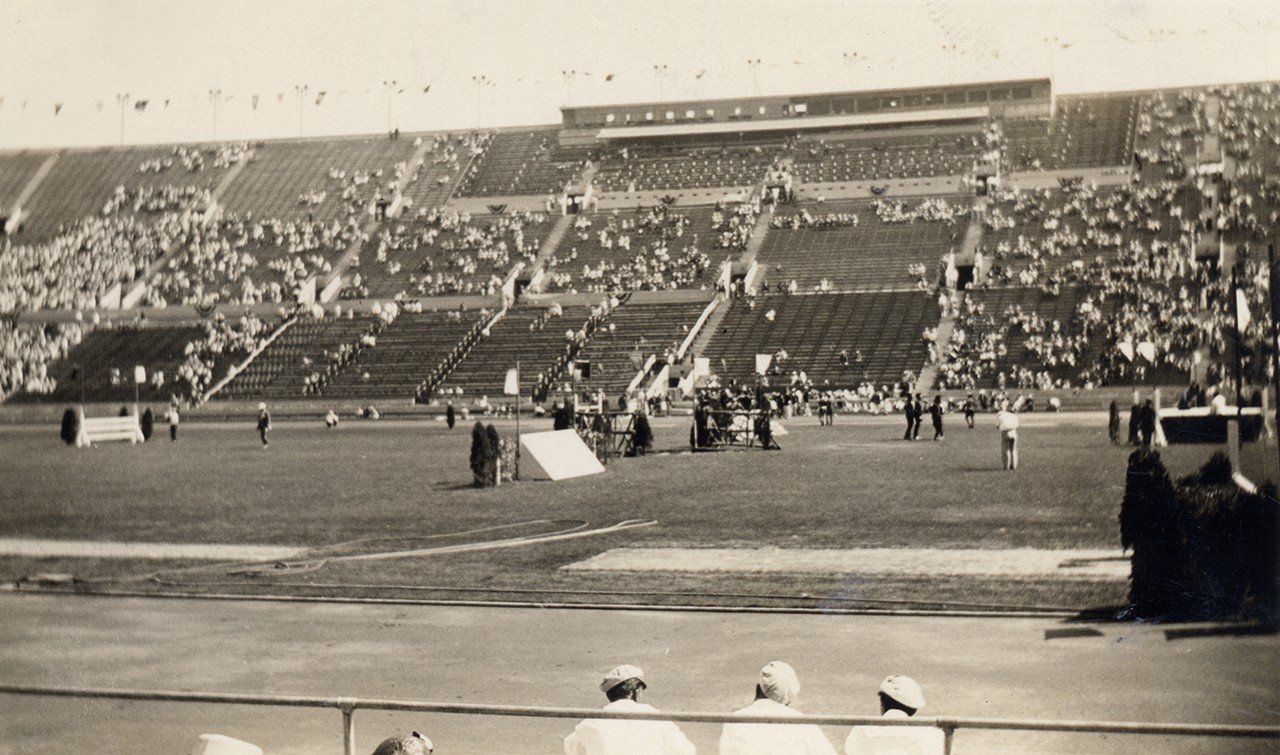 |
Field of the Olympic Stadium, 1932
Unknown Photographer; Los Angeles, California
Photographic print; 4 1/4 x 2 3/4 in.
32352A.3
Gift of Lonnie Edward Thompson |
On an Elevated Stage
Despite the setbacks, the 1932 Los Angeles Olympics saw many important firsts. The first ever “Olympic Village” was created in Baldwin Park for male athletes while female athletes stayed at the far more luxurious Chapman Park Hotel on Wilshire Boulevard. It was the first time that victory podiums were used to award medals. The 1932 Summer Games also marked the debut of China as an Olympic competitor; a Chinese delegation had attended the Games of the VIII Olympiad in 1924 but not competed. Then the Republic of China, the country sent only one athlete, Liu Changchun, who competed in Track & Field but was eliminated in the preliminary heats.
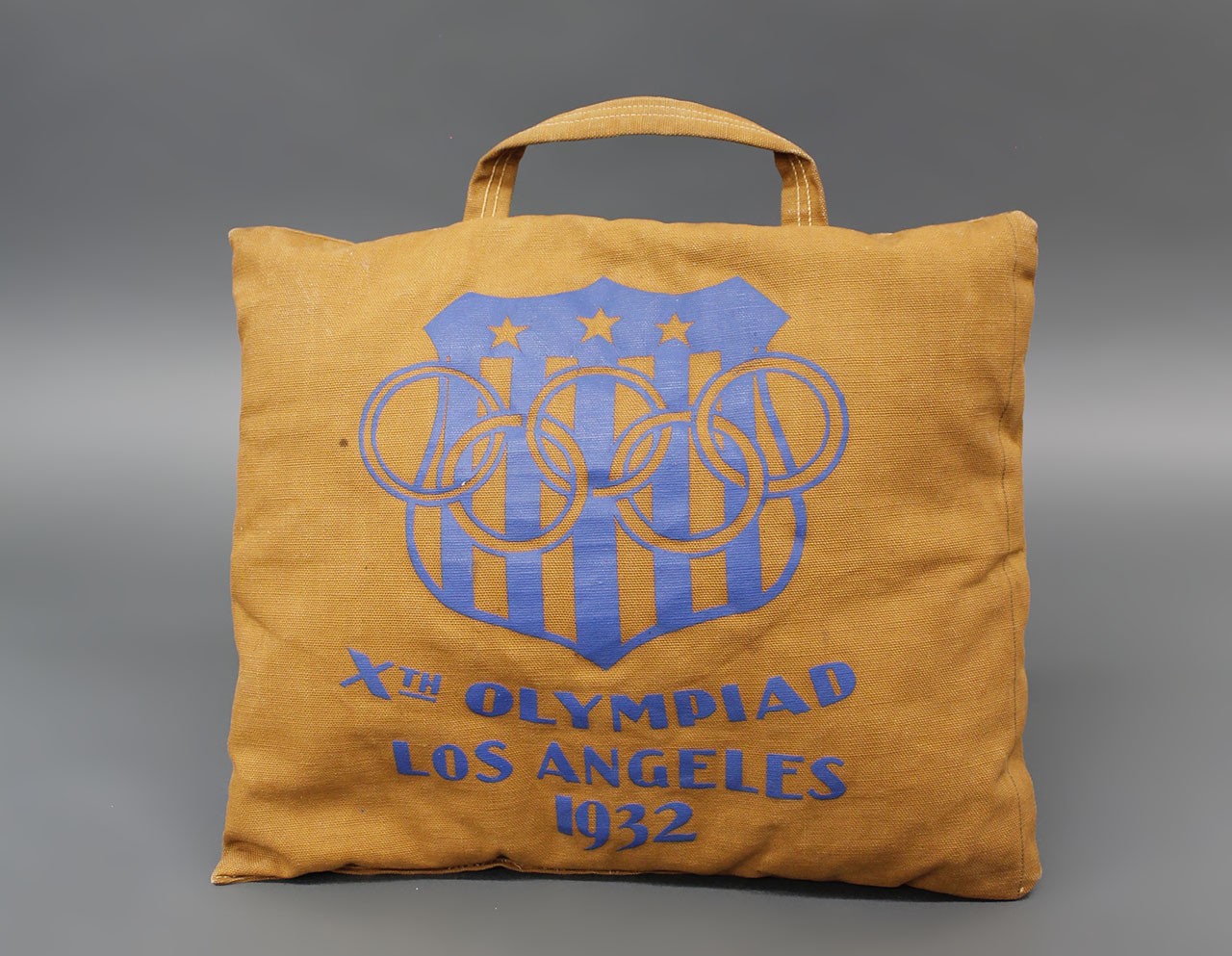 |
Olympic Stadium Seat Cushion, 1932
Los Angeles, California
Printed canvas and cotton; 11 1/2 x 14 in.
98.76.2
Gift of Mary M. Martin |
Some Commemoratives
Given the Bowers’ proximity to Los Angeles it is perhaps no surprise that ephemera, photographs, and even objects relating to the 1932 Olympics live in the Museum’s permanent collections. Pictured here is a printed seat cushion, apparently one of at least three different commemorative cushions to come out of the games. The photographs in this post show a stadium that is be familiar to most in the greater Los Angeles area and college football fans everywhere: the Los Angeles Memorial Colosseum. Now—in yet another wonderfully ironic turn of events given the stadium’s Grecian inception—it is home to the University of Southern California Trojans. One photograph appears to show the equipment for the equestrian sports. Lastly, a program and commemorative book list all the events and a history of the games respectively.
Just as we have done before, the Bowers Museum sends its best wishes to all the athletes competing in the XXIV Olympic Winter Games!
Text and images may be under copyright. Please contact Collection Department for permission to use. References are available on request. Information subject to change upon further research.






Comments 1
I have a redwood disk that shows the man throwing the discus from the 1932 Olympics. The disk is made of old growth redwood and about the perimeter of the 12" disk is carved The X olympiad, 1932 Los Angeles. Does anyone out in cyberspace know anything about a souvenir like is described above. Write me at 1010jansen@gmail.comThank you.